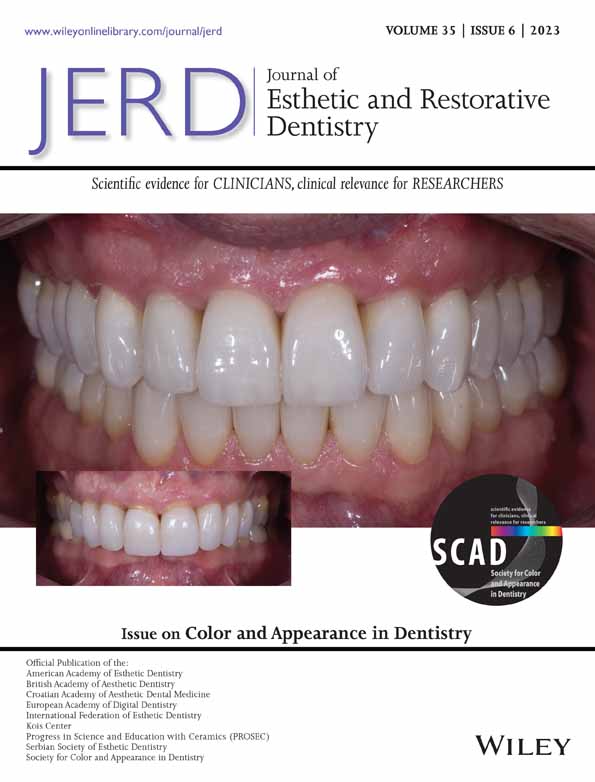Effect of staining layer on roughness after progressive wear of monolithic ceramics
Abstract
Purpose
The aim of this study was to evaluate staining layer behavior applied to high-translucency zirconia (YZHT), feldspathic ceramics (FD), and zirconia-reinforced lithium silicate (ZLS) surfaces against different antagonists.
Methods and Materials
Monolithic ceramic discs (n = 120) (ø 12 mm; thickness, 1.2 mm; ISO 6872) were obtained, 30 from YZHT and FD, and 60 from ZLS CAD/CAM blocks (staining layer applied before or after the crystallization procedure). The specimens were divided into 12 subgroups (n = 10) according to the antagonists: steatite, polymer-infiltrated ceramic, or zirconia. Mechanical cycling (1.5 × 104 cycles; 15 N; horizontal displacement, 6 mm; 1.7 Hz) and flexural strength tests (1 mm/min–1000 kg cell) were performed. The differences between final and initial roughnesses (Ra, Rz, and Rsm), the mass loss, and the flexural strength data were individually analyzed by two-way ANOVA and Tukey's test (α = 0.05).
Results
The roughnesses of all ceramics did not present a statistically significant difference before wear simulation: Ra (p = 0.3348), Rz (p = 0.5590), and Rsm (p = 0.5330). After the wear simulation, the Ra parameter was not affected by an interaction between ceramic and antagonist (p = 0.595). The Rz and Rsm parameters were affected only by the antagonist pistons (both, p = 0.000). The ceramics used in this study showed statistically significant differences in mass loss after the wear test (p < 0.0001). The additional firing (2 steps) of the ZLS2 led to a higher lost mass quantity.
Conclusion
All ceramics presented similar initial roughnesses and similar roughnesses after the wear simulation. The zirconia antagonist showed better performance against ceramics with high crystalline content.
Clinical Significance
It is clear that restorative materials must be carefully selected by dental practitioners according to indications, properties, and antagonists. The steatite antagonist, that is, an enamel analog, showed better performance against vitreous ceramics, while the zirconia antagonist showed better performance against ceramics with high crystalline content. Wear affects the surface roughnesses of the ceramics. Additional firing for the staining of the zirconia-reinforced lithium silicate ceramic led to a greater loss of mass.
Open Research
DATA AVAILABILITY STATEMENT
The data that support the findings of this study are available from the corresponding author upon reasonable request.




